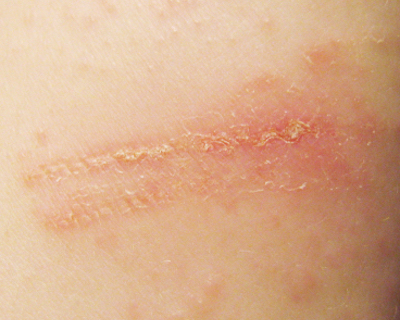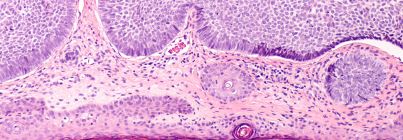Contact Dermatitis and Patch Testing
Expert care for allergic contact dermatitis
 Allergic contact dermatitis is a skin reaction that happens when your immune system overreacts to something that touches your skin, such as fragrances, preservatives, metals, dyes or plants like poison ivy. The reaction can cause redness, itching, swelling or a rash that may blister or become scaly.
Allergic contact dermatitis is a skin reaction that happens when your immune system overreacts to something that touches your skin, such as fragrances, preservatives, metals, dyes or plants like poison ivy. The reaction can cause redness, itching, swelling or a rash that may blister or become scaly.
Since triggers vary widely, patch testing is often used to pinpoint the exact allergen. Your provider may consider referral for patch testing when you have a rash that resembles eczema, is new or does not improve with standard therapies. Once the culprit allergen is identified, treatment focuses on avoiding the trigger, soothing inflammation and creating a personalized care plan to prevent future flare-ups.
Contact Dermatitis Pathogenesis, Symptoms and Diagnosis
Pathogenesis
New allergens can interact with the skin and immune system, triggering a rash-like reaction. The first time the immune system learns to recognize an allergen and respond, it’s called sensitization. After someone is sensitized, even small amounts of contact with that allergen can cause the skin to react.
Symptoms
Allergic contact dermatitis often looks like eczema, and can develop at any point in a person's lifetime. It is usually pink or red, scaly and itchy.
Diagnosis
The diagnosis of allergic contact dermatitis is made through collaboration between your primary skin provider and a patch test specialist, using your medical history, physical exam findings, lab tests (such as a biopsy) and patch test results.
Patch Testing
Patch testing is the most reliable way to diagnose allergic contact dermatitis and pinpoint the substances (allergens) that may be causing skin flare-ups. Since allergic contact dermatitis is a delayed-type hypersensitivity reaction, the testing process takes place over three visits in one week. These visits usually take place on Monday, Wednesday and Friday, over the course of about 96 hours.
At the final visit, results are carefully reviewed and any potential allergens are identified. Knowing your triggers allows us to guide you in avoiding them and reducing future flare-ups. It’s important to note that not everyone will have a positive reaction, which may mean the rash is not caused by a contact allergen.
Treatment for Contact Dermatitis
Our providers collaborate with your primary skin doctor to create a personalized skin regimen, which may include the use of topical or systemic immunosuppressive or immunomodulatory therapies to help control symptoms. By pinpointing allergens to avoid and developing a individualized skin care plan, we aim to reduce the need for additional treatments and enhance your overall quality of life.
Treatment for allergic contact dermatitis depends on the cause and severity, but generally includes:
- Avoiding any identified allergens
- Minimizing exposure to new allergens
- Treating existing inflammation of the skin (e.g., topical corticosteroid creams or oral steroids for more severe cases)
- Relieve itching (e.g., oral antihistamines)
Our Contact Dermatitis Specialist
Dr. Wu is a medical dermatologist with expertise in allergic contact dermatitis, cutaneous lymphoma and complex medical dermatology. She is the founder and director of the patch test clinic. Committed to compassionate, patient-centered care, she partners with patients to develop individualized treatment plans while leveraging her research and academic experience. Her research focuses on outcome metrics for dermatitis patients undergoing patch testing, the epidemiology of non-melanoma skin cancer, interventions for cutaneous T-cell lymphoma and advancing medical education.
Contact Us
For more information or to schedule an appointment, please call 916-734-6111 or 800-770-9282.



